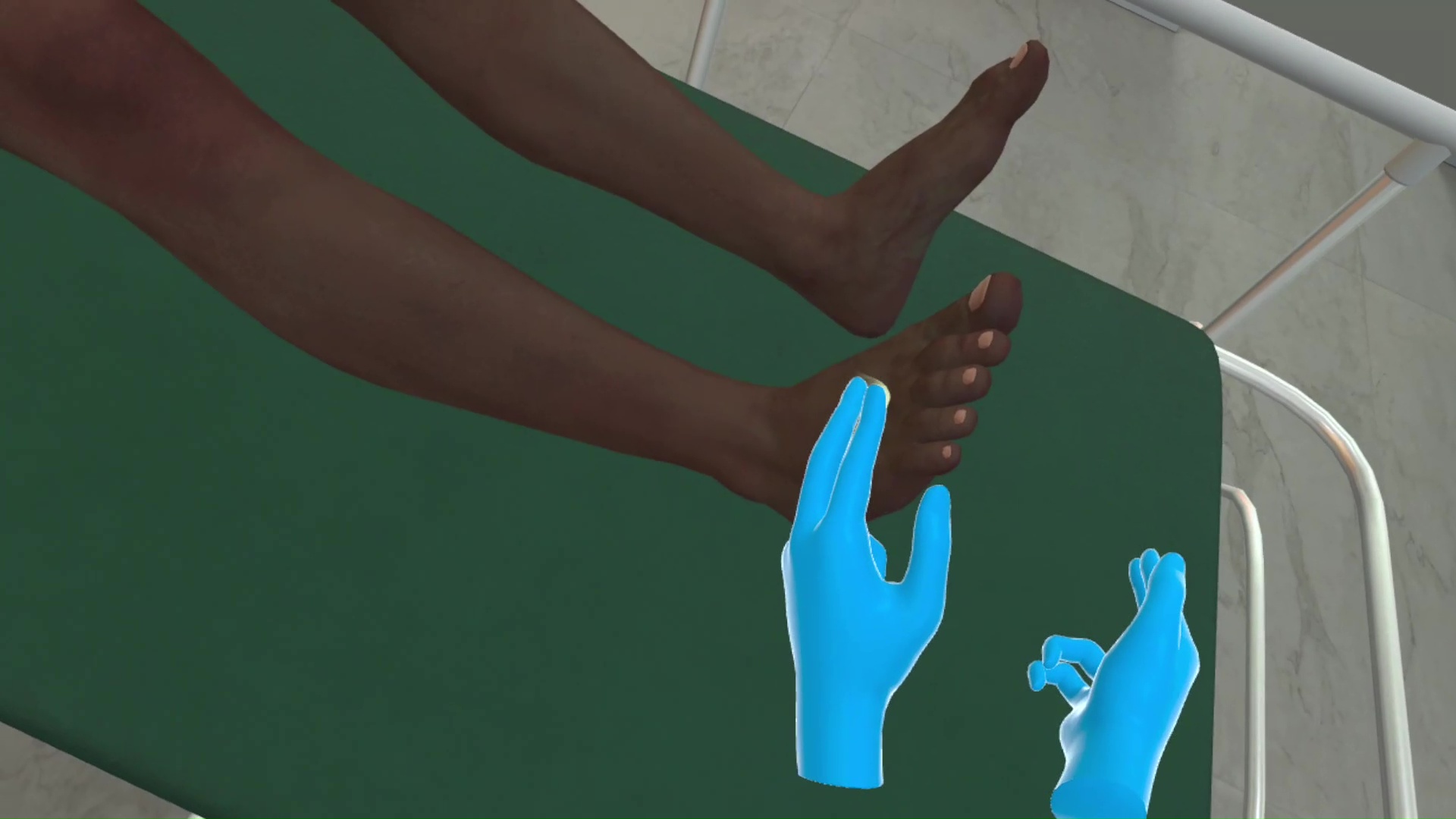Lower Extremity Pulses
Fifty-three-year-old Marcus Johnson has come to the emergency room because he has been experiencing shortness of breath for the past two days. Along with that he has also been experiencing a fluttering feeling in his chest and some swelling in his legs. His symptoms call for an assessment of his lower extremity pulses.
This VR simulation for Lower Extremity Pulses is designed to help healthcare practitioners practice locating and assessing the pulses in a patient’s lower extremities. With both training and assessment modes, learners can perform the procedure and assess themselves on their performance.
- Employ standard technique of locating and assessing:
- Femoral pulse
- Popliteal pulse
- Posterior tibial pulse
- Dorsalis pedis pulse
- Inform the patient of the assessment results
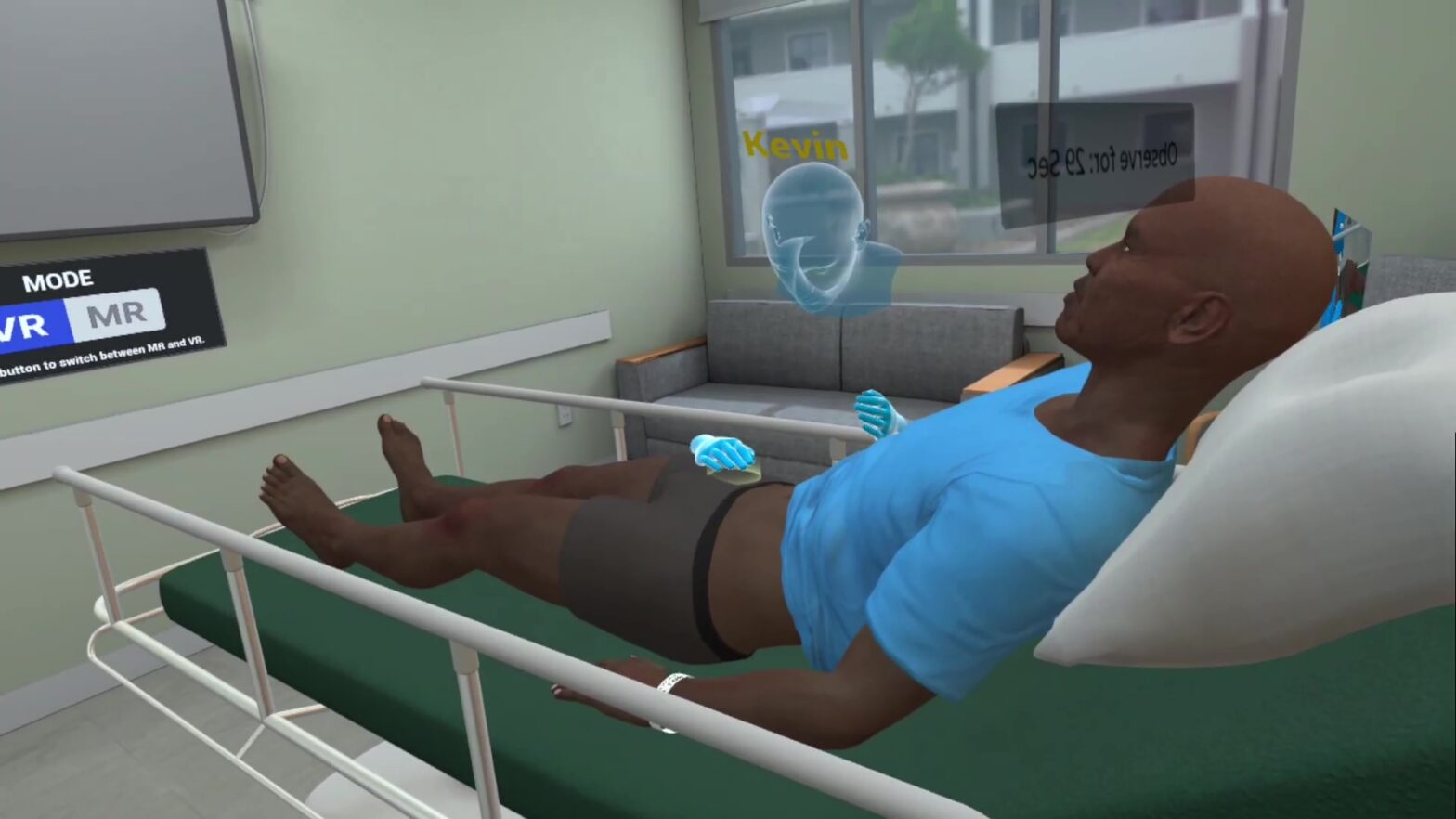
- Weinberg, I. Pulse Examination of the Lower Extremity. Vascular Medicine. Retrieved from angiologist.com
- MedSchool. (2020). Lower Limb Pulses. Retrieved from medschool.co
- Schreiber, M. (2016). Neurovascular Assessment. In Lippincott Nursing Pocket Card. Retrieved from nursingcenter.com
- International Journal of Lower Extremity Wounds. (No date). SAGE Publications. Retrieved from uk.sagepub.com
Customize Your Program
Get rid of the editor. Adopt in-VR customization.
MedVR Education is bringing to you in-VR customization that will enable you to customize your procedural simulations by making selections from a range of feature choices.
- Select patient from a diverse background
- Choose preferred virtual environment
- Select equipment used in the procedure
- Modify difficulty level of the assessment mode
- …..many more to come
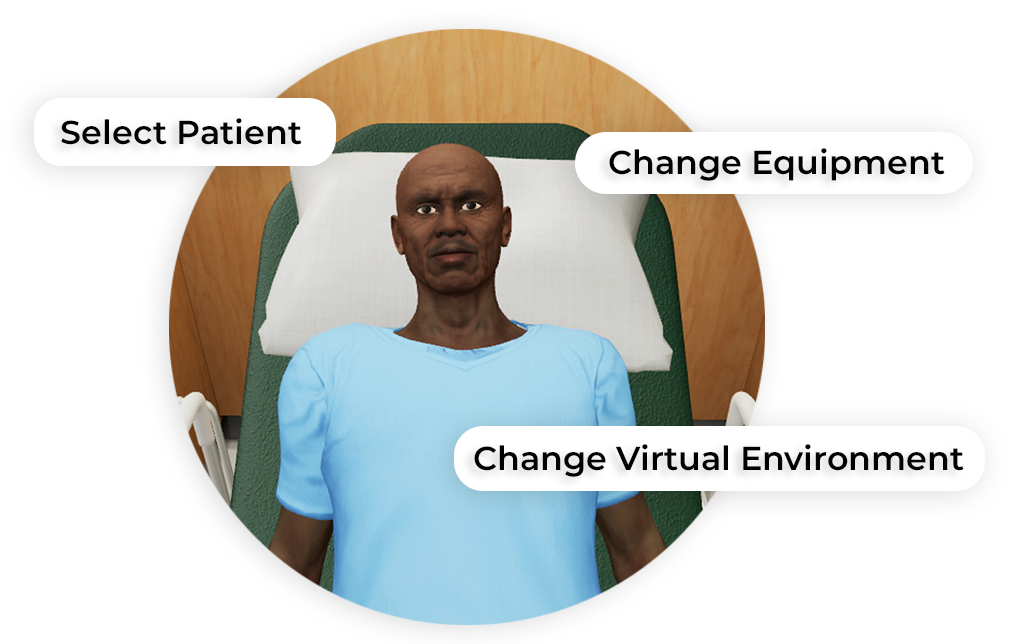
 Multi-playerSessions
Multi-playerSessions Physics-based Interactions
Physics-based Interactions
Core Skills Training
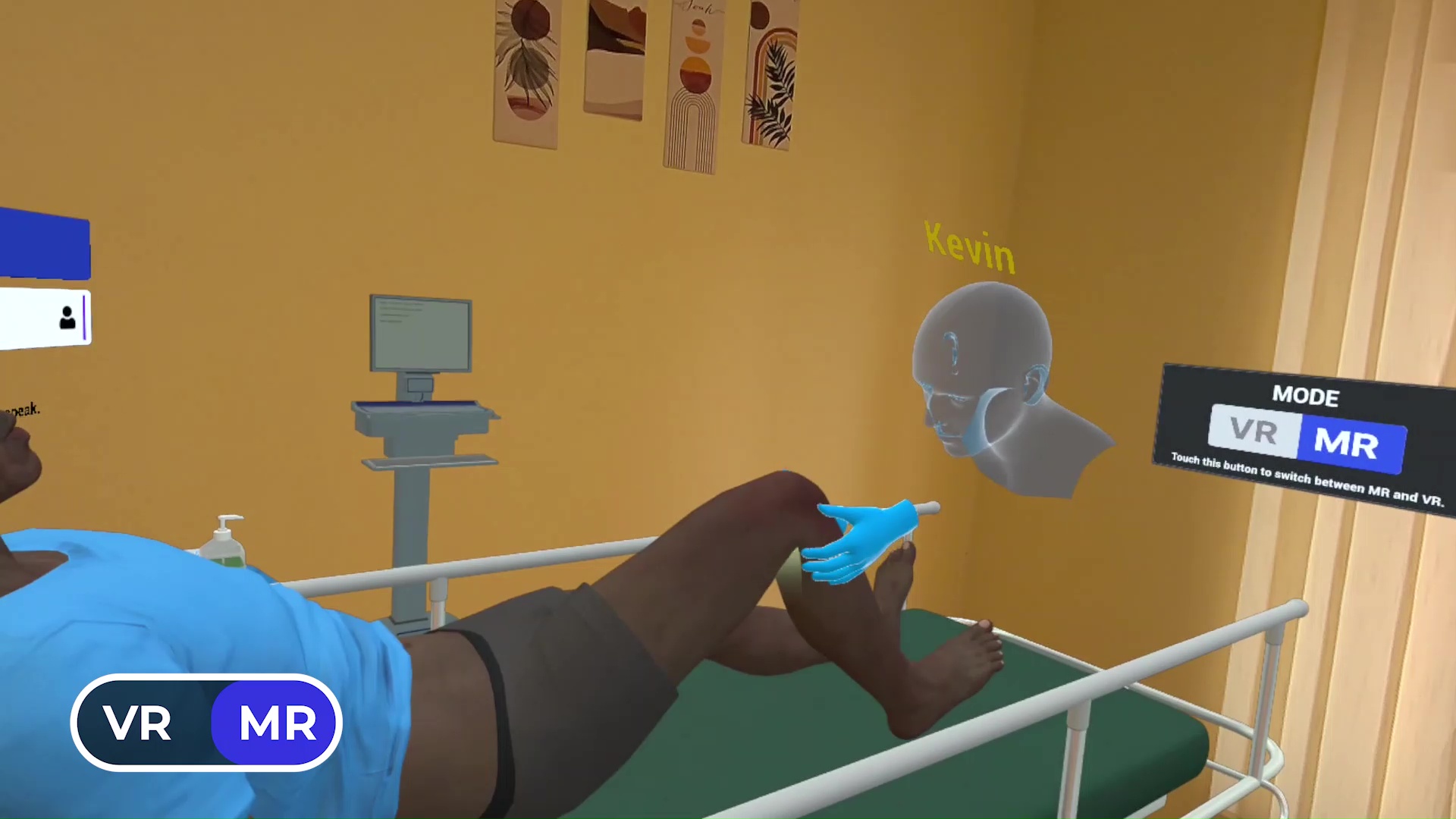
Assessing Lower Extremity Pulses
As a part of this Lower Extremity Pulses assessment procedure, the user will begin by confirming the patient’s name and date of birth and enquiring about any known allergies. The learner will then ask the patient to provide the symptoms that led to his visit to the ER. The patient’s symptoms will call for an examination of their lower extremity pulses and the learner will inform the patient of the same. After the patient changes into a hospital gown, the learner will proceed to locate and assess pulses in the patient’s lower extremities. These include bilateral femoral pulses, popliteal pulses, dorsalis pedis pulses, and posterior tibial pulses. All necessary affordances are provided to complete the procedure with efficiency.
Training
With prompts, guidance and affordances learners are hand-held through the process to practice the procedure in a virtual environment with a virtual patient.
- Photorealistic virtual environment
- Physics-based interactions
- Detailed instructions
- Adequate affordances to assist in task completion
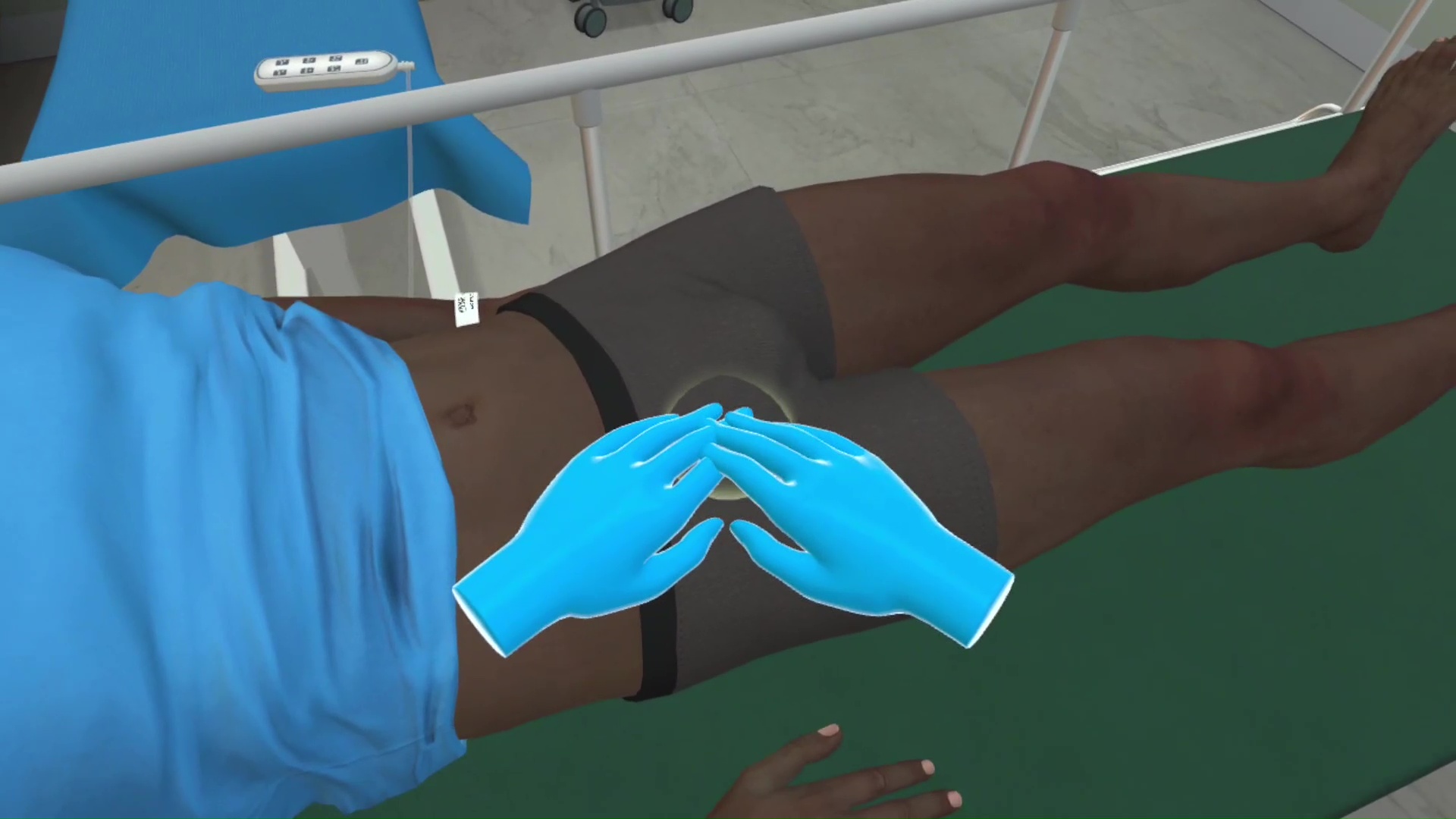
Assessment
Test acquired skills to perform the procedures from start to finish without prompts. An incorrect step will take the learner back to the start to start afresh.
- Live scoring
- Instant feedback
- Adequate affordances for efficient performance
- Time tracking to monitor activity completion
